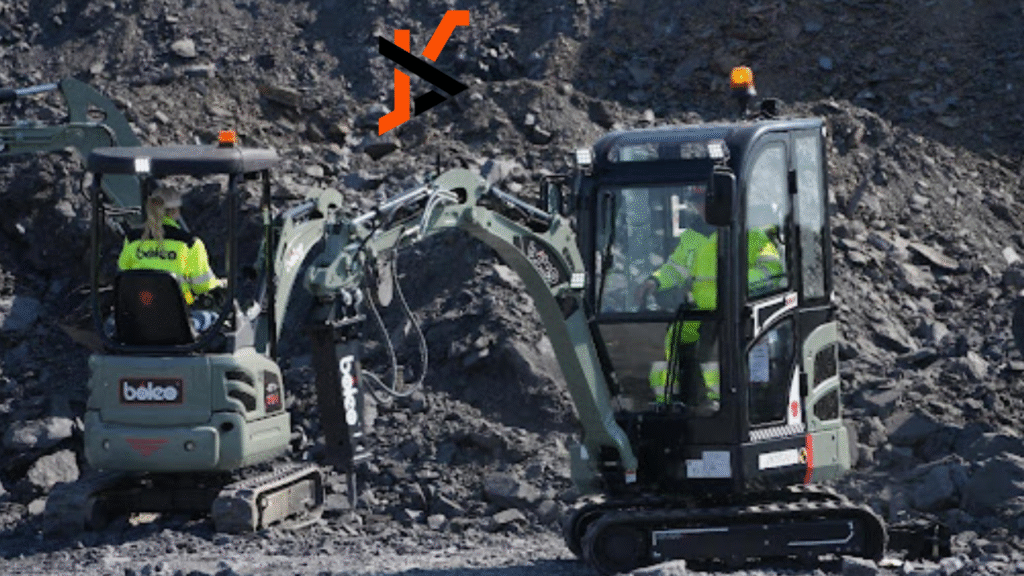If your mini excavator is slowing down, responding slowly, or overheating excessively, it could be due to your hydraulic oil getting worn out. As one of the most critical fluids in your equipment, hydraulic oil assists your mini excavator in operating with strength and accuracy. If not replaced frequently, the oil breaks down and wears out the internal parts, leading to expensive repairs or unexpected downtime.
This manual will indicate when and how to change hydraulic oil, what to replace it with, and the most effective methods of maintaining your mini excavator’s hydraulic system at its best.
Why Hydraulic Oil Maintenance is Important
The hydraulic system powers the motions of your excavator: boom hoisting, arm extension, bucket rotation, and even blade position. Clean, pressurized oil powers this system, transferring energy with efficiency. The oil becomes laden with metal shavings, dust, and water over time from use, as well as by heat and pressure breaking down the viscosity.
Neglecting oil changes can result in:
- Loss of digging and lifting capacity
- Decreased digging rate
- Hydraulic pump overheating
- Valve and cylinder failure
- Early hydraulic seal and filter failure
Annual hydraulic oil maintenance offers a longer equipment life, better smoothness, and more job site dependability.
How Often to Change Hydraulic Oil
Typically, hydraulic oil in a mini excavator should be changed at 2,000 to 3,000 operating hours. Your work conditions and machine use can affect the interval.
Factors that accelerate oil degradation:
- Operating in dusty, muddy, or wet environments
- Lifting heavy loads frequently
- Working in extreme heat or cold
- Long operating hours without breaks
Warning signs it’s time for a change:
- Oil appears dark, sludgy, or cloudy
- Hydraulic functions become slow or jerky
- Unusual noises from the hydraulic system
- Visible leaks or drops in pressure
Checking the oil regularly for color, consistency, and level can prevent premature wear and maintain high performance.
Tools and Supplies You’ll Need
Before beginning an oil change, gather all necessary supplies:
- Correct hydraulic oil (refer to manufacturer’s specifications)
- A new hydraulic filter
- Wrench set
- Drain pan or container
- Funnel for clean filling
- Lint-free cloths or shop rags
- Protective gloves and eye gear
Ensure that the machine is switched off, the engine is cool, and the excavator is placed on level ground.
Step-by-Step How to Change Hydraulic Oil
1. Draining the Old Oil
Locate the hydraulic tank drain plug, usually at the reservoir’s bottom. Position your drain pan underneath, then remove the plug carefully. Allow the old oil to drain fully—this will take a few minutes. Clean up the area afterward and tighten the plug tightly to avoid leaks.
2. Replacing the Hydraulic Filter
Remove the old hydraulic oil filter using a wrench or filter strap. Check the filter port for dirt or debris and clean it thoroughly. Install the new filter, ensuring it’s tightened according to spec—too loose causes leaks; too tight may damage the filter housing.
3. Refilling with New Hydraulic Oil
Fill the hydraulic reservoir with new oil using a funnel. Fill it slowly and check the level frequently using the dipstick or sight gauge. Do not fill it over capacity, as it will cause pressure problems or foaming in the system.
4. Running the System and Bleeding Air
Start up the engine and allow the equipment to idle. Cycle each hydraulic function (boom, arm, bucket) for a few seconds to get the oil flowing and remove air bubbles. Check for leaks around the drain plug and filter. Shut off the engine after several minutes and re-check the oil level. Add as needed.
Choosing the Right Hydraulic Oil
Hydraulic oils come in various formulations—selecting the right one is key to optimal performance.
Common Hydraulic Fluid Types:
| Type | Advantages | Disadvantages |
| Mineral-Based | Inexpensive, good general performance | Degrades faster, less eco-friendly |
| Synthetic | Excellent thermal stability, longer life | Higher cost |
| Biodegradable | Eco-friendly, safer for sensitive areas | Costly, shorter service intervals |
| Water-Based | Fire-resistant | Poor lubricity, prone to corrosion |
Pro Tips for Hydraulic System Care
Maintaining the hydraulic system goes beyond just changing the oil. Here are some long-term tips:
- Inspect hoses and fittings regularly for cracks, swelling, or leaks
- Keep the hydraulic tank sealed tightly to prevent moisture contamination
- Monitor pressure gauges for unusual spikes or drops
- Replace filters every time you change the oil
- Flush the system periodically to remove sediment and sludge buildup
Proactive maintenance keeps your mini excavator running efficiently and protects your investment.
Upgrade Your Fleet with Boleo Mini Excavators!
Need reliable, high-performance construction, landscaping, or agricultural machines? Boleo mini excavators provide a line from small 1.2 ton mini excavators to heavy-duty 3.5 ton mini excavators. Boleo mini excavators are ideal for any job site. Renowned for precision hydraulics and user-friendliness, Boleo delivers durability where it counts.
👉 Explore the full range of Boleo mini excavators today and elevate your productivity with machines built to perform.

